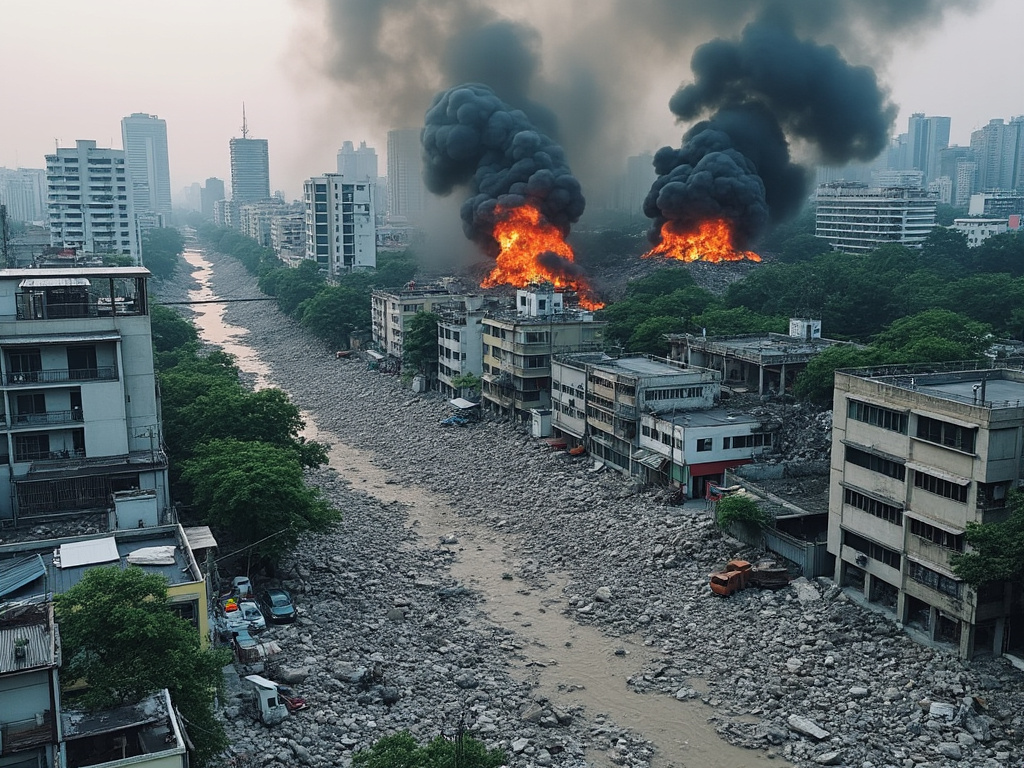
Black carbon emissions from various sectors are significantly impacting the glaciers of Asia, leading to increased environmental risks.
Black carbon, a powerful pollutant with a higher warming potential than carbon dioxide, is contributing to the accelerated melting of glaciers from the Himalayas to the Arctic, raising significant concerns about the region's water systems.
This dark substance, which is a major component of PM2.5 particulate matter, can penetrate deep into the lungs, posing serious health risks, while also trapping heat when it settles on snow and ice surfaces.
The result is a marked darkening of these surfaces, which accelerates glacial melt.
Experts highlight that the rapid melting of glaciers jeopardizes water availability, increasing the potential for floods and water shortages.
Khushboo Sharma, an air-pollution analyst at the International Centre for Integrated Mountain Development (ICIMOD) in Kathmandu, emphasized the growing dangers associated with the accelerating melt rates of glaciers.
A report released by the Clean Air Fund identifies China and India as the leading sources of black carbon emissions globally.
Industrial activities, including power generation, steel and cement production, and even agricultural processes such as rice and sugar milling, contribute significantly to these emissions.
The report indicates that the residential sector plays a crucial role in black carbon emissions for both China and India, primarily due to the continued reliance on traditional fuels for cooking and heating.
In contrast, in Russia, wildfires are cited as the largest source of black carbon, whereas the transportation sector in the United States contributes significantly to emissions in that region.
This multifaceted issue underscores the complex interplay of various sources contributing to black carbon pollution, particularly in rapidly developing regions.
This dark substance, which is a major component of PM2.5 particulate matter, can penetrate deep into the lungs, posing serious health risks, while also trapping heat when it settles on snow and ice surfaces.
The result is a marked darkening of these surfaces, which accelerates glacial melt.
Experts highlight that the rapid melting of glaciers jeopardizes water availability, increasing the potential for floods and water shortages.
Khushboo Sharma, an air-pollution analyst at the International Centre for Integrated Mountain Development (ICIMOD) in Kathmandu, emphasized the growing dangers associated with the accelerating melt rates of glaciers.
A report released by the Clean Air Fund identifies China and India as the leading sources of black carbon emissions globally.
Industrial activities, including power generation, steel and cement production, and even agricultural processes such as rice and sugar milling, contribute significantly to these emissions.
The report indicates that the residential sector plays a crucial role in black carbon emissions for both China and India, primarily due to the continued reliance on traditional fuels for cooking and heating.
In contrast, in Russia, wildfires are cited as the largest source of black carbon, whereas the transportation sector in the United States contributes significantly to emissions in that region.
This multifaceted issue underscores the complex interplay of various sources contributing to black carbon pollution, particularly in rapidly developing regions.






































